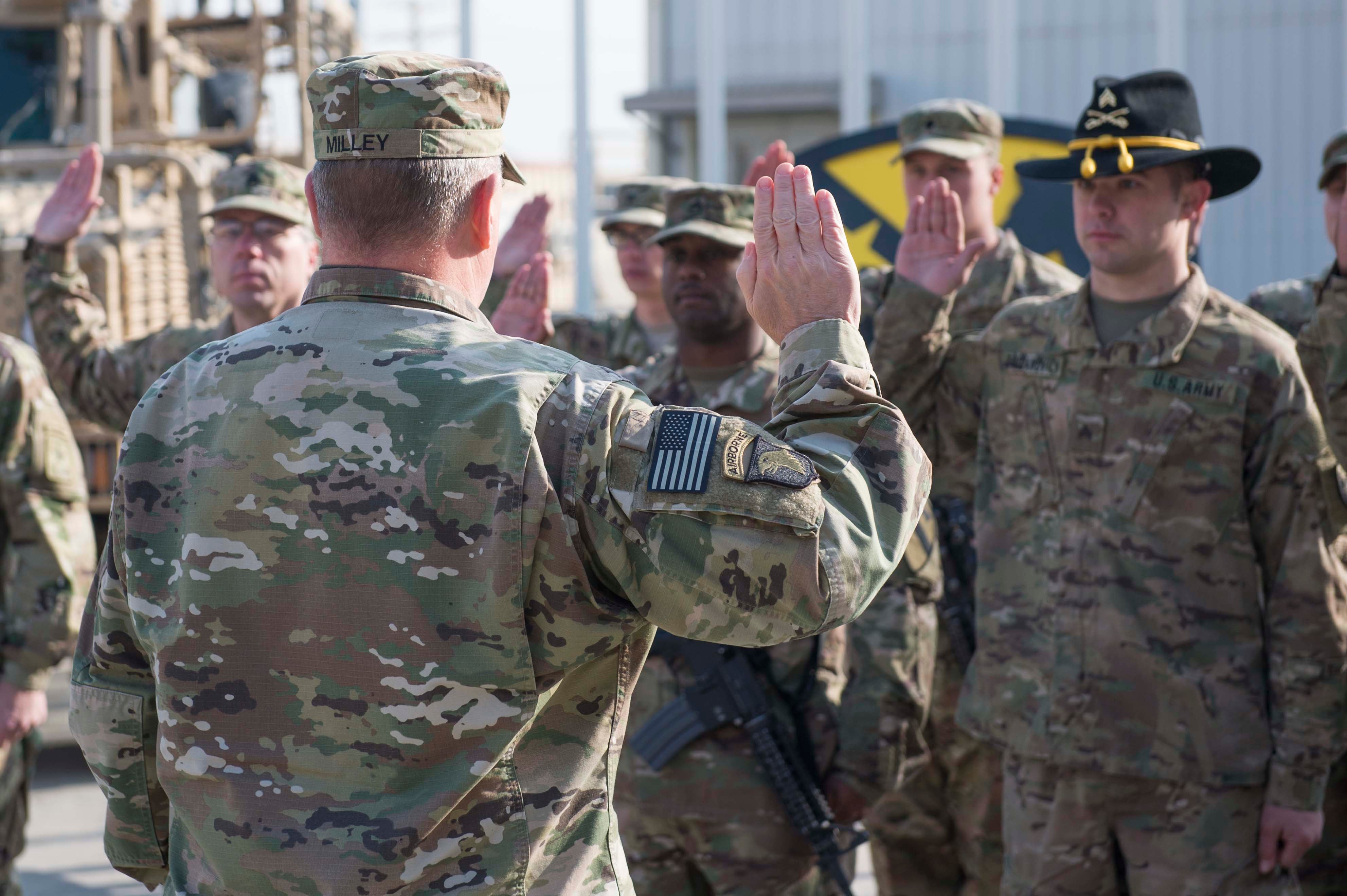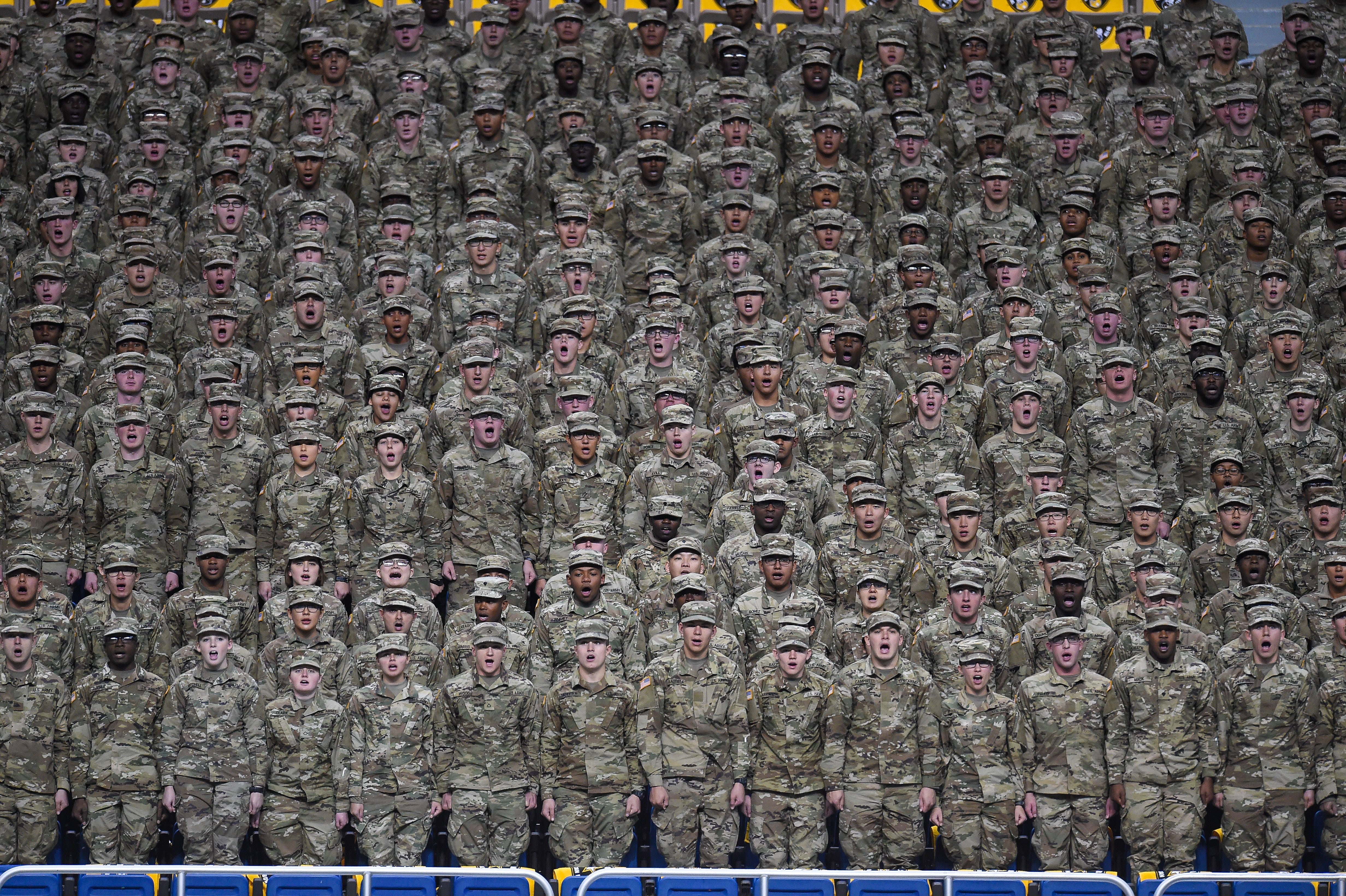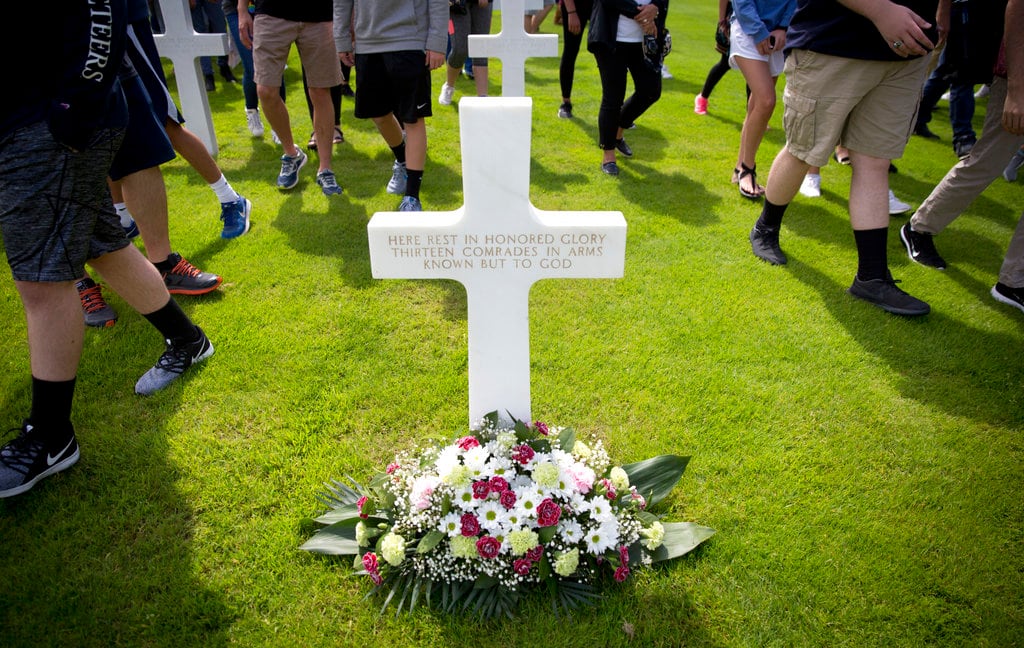The Army is offering bonuses worth up to $40,000 or enlistment contracts as short as two years as it tries to recruit 6,000 more soldiers this year than it had planned.
In a reversal of a drawdown that has been going on for years, the Army now needs to add 16,000 more soldiers to its active-duty ranks by Sept. 30. The growth, which is outlined in the 2017 National Defense Authorization Bill, also requires the Army to retain 9,000 more soldiers than it originally planned.
This means two-year enlistments are on the table for almost 100 military occupational specialties, and U.S. Army Recruiting Command is prepared to funnel $300 million into enlistment bonuses, recruiter incentives and marketing, according to its deputy commander.
The recruiting plan, which includes adding about 600 new recruiters and boosting their pay, will combine with the Army’s retention plan — the service is offering big bonuses to existing soldiers as well, including $10,000 for a one-year extension — to put the active component at 476,000 soldiers by the end of September.
In all, the Army needs to grow by 28,000 soldiers in the active Army, Army National Guard and Army Reserve by Sept. 30.
The Army then is faced with the challenge of determining where to put all of the new bodies, which will total 6,000 recruits, 9,000 reenlisted soldiers and 1,000 retained officers.
A decision on the ultimate end strength plan, to include the National Guard and Army Reserve, is due later in February, said Lt. Col. Randy Taylor, an Army spokesman.
That task is made even more complicated by the budget uncertainty facing the Army.
As of Feb. 14, the Army has enlisted 20,600 recruits this fiscal year, according to USAREC. In total, the service is at about 53 percent of its total plus-up goal for the year, Sergeant Major of the Army Dan Dailey said.
The next step is for Congress to pass an appropriations bill with a budget to match the new end-strength numbers.
Dailey said he was confident that the Army would get enough money in this year's budget to properly train and equip the influx of new soldiers — and pay for the bonuses the Army is promising to soldiers old and new.
"We're going to go back and ask for more money," Dailey said.
He added that senior Army leaders have long sounded the alarm about how much the Army was shrinking.
"For the last several years, we've been talking about the risk with the size of our force," Dailey said. "[Army Chief of Staff Gen. Mark Milley] has made it very clear that he's uncomfortable with our risk. We've been communicating with Congress that we need to increase end strength."
But numbers aren't everything, he said.
"We need the resources to accomplish the missions we have at hand," he said, including everything from obligations to combatant commanders in the Pacific, Europe, Middle East and beyond, down to benefits and Morale, Welfare and Recreation programs at home that provide a high quality of life for soldiers.
A quick two years
The Army has offered two-year enlistments on and off during the past few decades and has generally limited them to very specific military occupational specialties, officials said.
But this year, 94 of the Army's enlisted MOSs are eligible for a two-year contract, to give people who are reluctant to sign away four or six years the chance to get their feet wet, Brig. Gen. Donna Martin, deputy commanding general of USAREC, told Army Times in a Feb. 14 interview.
"And while they're in for those two years, they earn benefits for education," she said.
That means 80 percent of that soldier's college degree will be covered by the GI Bill.
"They're going, 'Four years? Six years?'" Martin said of the average young person considering enlisting. "That seems like forever, right?"

A paratrooper assigned to the 173rd Airborne Brigade engages targets during a live-fire exercise in Germany. The Army is adding thousands more soldiers to its ranks this year after a years-long drawdown.
Photo Credit: Gerhard Seuffert/Army
But two years, USAREC hopes, will be a more manageable amount of time that could sway a potential recruit toward enlisting.
The Army also is hoping that two-year enlistments will appeal to a certain kind of kid just getting out of high school.
"There's a population out there that's doing this gap year," Martin said, using Malia Obama, who's taking a year off before starting college, as an example.
Martin and her team are hoping that the promise of some life experience and money for college will appeal to smart, motivated high school graduates who are interested in serving but want the option to move on by the time they're 20, for example.
Selling the benefits
Technically, there's not a whole lot soldiers can do in the Army in under two years.
Depending on the MOS, they'll spend several months to a year in the initial training pipeline, and likely not have enough time left on their contract to report to a unit, get into the deployment training cycle and go abroad for a full deployment.
However, the Army is betting that a good chunk of those enlistees will stay on.
"You know who enlisted on a two-year enlistment? Dan Dailey did," the Army's senior enlisted soldier told Army Times on Feb. 14.
Dailey said he joined to be an aviator, but went infantry instead because his hearing disqualified him from flying.
"Not until after those two years did I realize, this is my calling," he said. "Had I not been afforded that opportunity, maybe to somebody's benefit now, I might not have been the sergeant major of the Army."
So while two-year contracts could be a quick fix to get the Army to this year's end strength requirement, it could pay off in the long run by getting commitment-shy kids in the door.
"It's not just about getting people," Dailey said. "A lot of these young men and women want to join the Army, but just like any 18- to 24-year-old — like my son who's in college now — they don't know what they want to do for the rest of their lives."

Army Chief of Staff Gen. Mark Milley gives the oath of enlistment to deployed soldiers during a re-enlistment ceremony on Bagram Airfield, Afghanistan. The Army is offering big bonuses to retain 9,000 additional soldiers as part of a 28,000-soldier growth this year.
Photo Credit: Sgt. 1st Class Chuck Burden/Army
And they'll have plenty of choices once they make the decision. The 94 MOSs opened up for two-year commitments include everything from infantry, combat engineer and fire support specialist to highly specialized jobs like cryptologic linguist and signals acquisition/exploitation analyst.
For those who are willing to sign away more than two years, there are bonuses up for grabs worth anywhere from $1,000 to $40,000.
Soldiers who enlist for six years to be a cardiovascular specialist, satellite communications maintainer-operator or patriot fire control enhanced operator maintainer can net $40,000 for enlisting, according to this year's bonus program scheme.
There are also bonuses as low as $1,000 for a three-year contract as a cannon crewmember, cavalry scout or combat medical specialist, among others.
And for those looking at a job that doesn't offer an enlistment bonus, there are "quick ship" bonuses for most recruits willing to head to basic training within in a month or two of signing up. Those are worth between $5,000 and $20,000.
If you're eligible for both an enlistment bonus and a quick-ship bonus, your pay-out is capped at $40,000.
There's also something in it for those already on active duty. The Army is trying to add 600 recruiters to bring in these 6,000 new soldiers, and recruiting detail could net you an extra $500 a month for up to a year's commitment.
Finding the best
The Army, and the military in general, has a problem that officials have been opening up about more and more: More than 70 percent of American youth aren't even eligible to join the military.
In the past, the Army has relaxed fitness, tattoo and criminal history standards, but this year USAREC is determined to bring in more talent with the same strict rules.
Once the Army looks at the pool of physically fit high school graduates with clean records, it's an even narrower sliver of people who are suited to doing the Army's toughest and most technical jobs, and the service has to compete with college and civilian job prospects to draw them in.
"The mantra used to be either you go into the Army or you go to college," Martin said. "What the Army has developed is a system where you can go into the Army and go to college."
Then there's the diversity issue, she added. More than 50 percent of new recruits come from just seven states, and many of them join because they have a parent who served.
"In 1990, 40 percent of young people between 16 and 24 had a military parent," she said. "In 2014 it was 16 percent."
There's also a growing economy.
"While that's great for the rest of the United States, because of the quality of the young person we're going after, we're competing against industry for that same young person," Martin said.
The hope is that bonuses and short enlistments will draw in enough people to reach this year's quotas and retain a handful of quality soldiers for the long-term.
Meghann Myers is the Pentagon bureau chief at Military Times. She covers operations, policy, personnel, leadership and other issues affecting service members.





